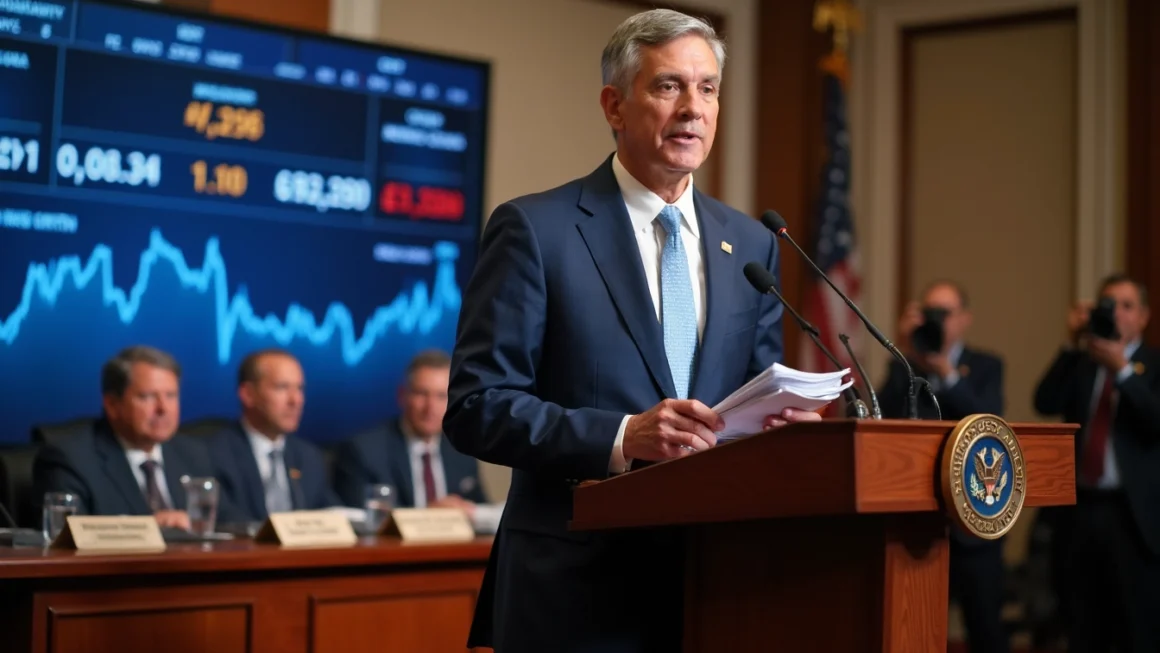The Federal Reserve’s latest policy meeting has concluded, marking a pivotal moment in the ongoing battle against inflation. As economic indicators continue to paint a complex picture, the central bank’s decision to hold interest rates steady at a 22-year high reflects a cautious approach to monetary policy.
The Fed’s Current Stance
Table of Contents
In a move that was widely anticipated by economists and market analysts, the Federal Open Market Committee (FOMC) chose to maintain the federal funds rate at its current range of 5.25% to 5.50%. This decision comes after a series of aggressive rate hikes aimed at cooling an overheated economy and bringing inflation back to the Fed’s target of 2%.
Implications for the Economy
The pause in rate hikes signals the Fed’s recognition of the delicate balance required to manage inflation without tipping the economy into a recession. By holding rates steady, the central bank is allowing time for previous monetary tightening measures to fully impact the economy.
Analyzing Economic Indicators
Several key economic indicators have influenced the Fed’s decision:
- Inflation rates showing signs of moderation
- Labor market resilience with steady job growth
- Consumer spending patterns remaining robust
- GDP growth exceeding expectations in recent quarters
These factors suggest that while the economy is still strong, the inflationary pressures may be easing, albeit slowly.
The Path Forward
Looking ahead, the Fed’s future actions will be heavily data-dependent. The central bank has emphasized its commitment to achieving price stability while supporting maximum employment. This dual mandate requires a nuanced approach to monetary policy.
Potential Scenarios
Economists are divided on the future trajectory of interest rates. Some scenarios include:
- Further rate hikes if inflation proves persistent
- Extended pause to assess the full impact of previous hikes
- Potential rate cuts in late 2024 if economic growth slows significantly
Global Economic Context
The Fed’s decisions have far-reaching consequences beyond U.S. borders. Global markets, currency exchange rates, and international trade are all influenced by U.S. monetary policy. As such, central banks worldwide closely monitor the Fed’s actions to inform their own policy decisions.
Automation in Economic Analysis
In today’s fast-paced financial world, the ability to quickly analyze and respond to economic data is crucial. Automation tools have become indispensable for financial institutions and analysts. For those looking to streamline their economic analysis processes, automation platforms can provide valuable solutions for data processing and reporting.
Market Reactions
Following the Fed’s announcement, financial markets have shown mixed reactions:
- Stock markets initially rallied on the news of steady rates
- Bond yields experienced modest fluctuations
- The U.S. dollar’s value against major currencies saw slight changes
These reactions underscore the market’s sensitivity to monetary policy decisions and the importance of clear communication from the Federal Reserve.
Challenges Ahead
Despite the current pause, the Fed faces several challenges in the coming months:
- Balancing inflation control with economic growth
- Navigating geopolitical uncertainties affecting global trade
- Addressing potential asset bubbles in various sectors
- Managing public expectations and market sentiment
Conclusion
The Federal Reserve’s decision to hold interest rates steady reflects a cautious optimism about the state of the U.S. economy. While progress has been made in the fight against inflation, the path to long-term price stability remains uncertain. As economic conditions continue to evolve, market participants and policymakers alike will need to remain vigilant and adaptable.
The coming months will be crucial in determining whether the current monetary policy stance is sufficient to achieve the Fed’s goals without causing undue economic stress. As always, a combination of data analysis, market insight, and prudent decision-making will be essential in navigating the complex economic landscape ahead.




